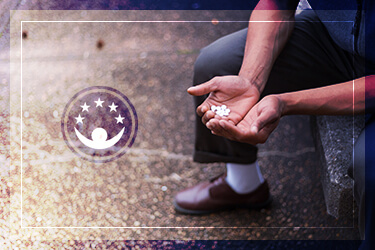Can You Overdose on Suboxone?
Suboxone is a brand name prescription medication that combines two drugs to help people struggling with opioid addiction and abuse overcome their physical dependence.
Suboxone is an opioid medication that combines buprenorphine, a long-acting partial opioid agonist, and naloxone, a drug that temporarily reverses the effects of opioid drugs on the brain.
That being said, people who do not have a high opioid tolerance may still be able to experience some euphoria by taking Suboxone, and some medications can interfere with the drug’s functioning. These problems can lead to overdose, even though the drug contains naloxone.
Low Opioid Tolerance and Suboxone Overdose
 Drugs like buprenorphine and methadone were developed to help people who have long struggled with addiction to narcotics, including prescription opioids and heroin. When a person receives a prescription for these medications, it is assumed that they have a high tolerance for the drug along with a physical dependence.
Drugs like buprenorphine and methadone were developed to help people who have long struggled with addiction to narcotics, including prescription opioids and heroin. When a person receives a prescription for these medications, it is assumed that they have a high tolerance for the drug along with a physical dependence.
Tolerance occurs when the body gets used to a specific amount of drug in the system and no longer responds to that level of the substance. Drugs like prescription opioids can lead to tolerance, as the opioid receptors in the brain get used to the artificial painkiller and no longer block pain signals as effectively. More often, people who abuse drugs like heroin in large doses develop tolerance to that amount of the drug and no longer experience the same level of euphoria as a result. This causes them to take more of the drug to reach the same level of intoxication, and this can lead to an overdose.
Physical dependence means that the body needs a specific level of a drug, like narcotics, to reach equilibrium in the brain.
This causes withdrawal symptoms, including intense cravings for the drug.
Dependence and tolerance often correlate with addiction. People who have struggled with an addiction to narcotics for years need help tapering off these substances, so their body can slowly detox from a long dependence. When dependence is reduced, tolerance is too, and the person will become more sensitive to smaller doses of narcotics. After some time working on a taper, a person may be able to take a large dose of Suboxone and experience a high from it. It is also possible for people taking Suboxone as prescribed to relapse back into their original addiction patterns. People who have struggled with heroin or opioid painkiller addiction for a long time may return to consuming these drugs even though they are also taking Suboxone. This can also lead to overdose because there is too much opioid in the body.
Additionally, people who have not built up a tolerance to Suboxone but receive a prescription because of an addiction to narcotics may be able to get high on the drug. This could lead to similar drug-seeking behaviors and cravings associated with addiction, including ramping up how much Suboxone the person ingests, which can cause an overdose.
Find Suboxone Treatment Centers Near You
If you or a loved one needs help with addiction, there may be a solution near you. Explore our rehab facilities below.
Suboxone and Other Drug Interactions
Several drugs interact with Suboxone. Some of these drugs include:
- Benzodiazepines
- Antidepressants
- Phenobarbital and other epilepsy treatments
- Hormonal contraceptives
- Barbiturates
- Alcohol
One of the most dangerous interactions involves mixing Suboxone and benzodiazepines. These fast-acting anti-anxiety medications, like Klonopin, Xanax, and Valium, are notorious for enhancing the effects of other drugs, such as prescription narcotic painkillers or alcohol. In fact, a combination of any two, or all three, of these drugs can lead to hospitalization. The DAWN Report showed that, between 2005 and 2011, almost 1 million people went to the hospital for emergency medical attention due to any combination of opioids, benzodiazepines, and alcohol.
Although buprenorphine is a partial opioid agonist, and not a full agonist like hydrocodone or oxycodone, it can still create euphoria like harder narcotics do if a person can enhance the drug’s effects. Often, this involves taking a lot of buprenorphine or getting the full dose all at once. A person could also mix benzodiazepines and Suboxone, which bypasses the naloxone, and get very intoxicated from the buprenorphine. This practice can quickly lead to overdose.
The Ceiling Effect with Suboxone
On its own, buprenorphine usually has a ceiling effect. This means that though the drug may induce a high, which increases as the dose increases, it only does so up to a certain point. For many people ending an opioid addiction, this means that they cannot get high from buprenorphine because they cannot take enough of it. They hit the ceiling.
To people new to opioid abuse, however, the alleged ceiling affect may make Suboxone or Subutex seem safer than Percocet or morphine. Those with little or no opioid tolerance may suffer an overdose before they hit the ceiling because their body is not used to the presence of opioids. People who mix drugs for recreational reasons, like benzodiazepines or alcohol with Suboxone, may bypass the ceiling effect and experience an overdose.
Ways to Get in Contact With Us
If you believe you or someone you love may be struggling with addiction, let us hear your story and help you determine a path to treatment.
There are a variety of confidential, free, and no obligation ways to get in contact with us to learn more about treatment.
- Call us at
- Verify Your Insurance Coverage for Treatment

